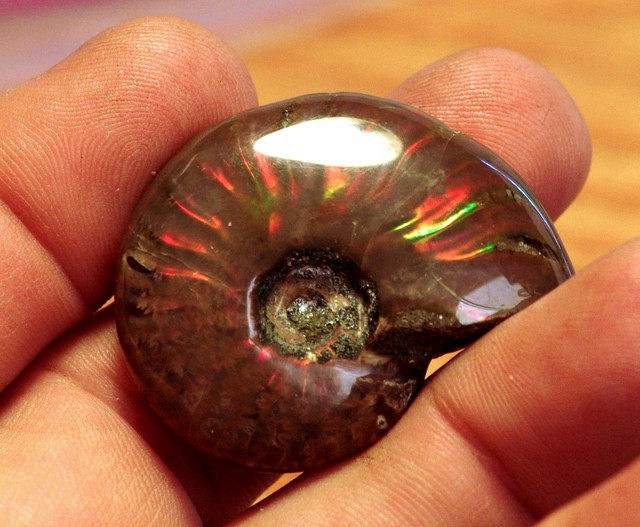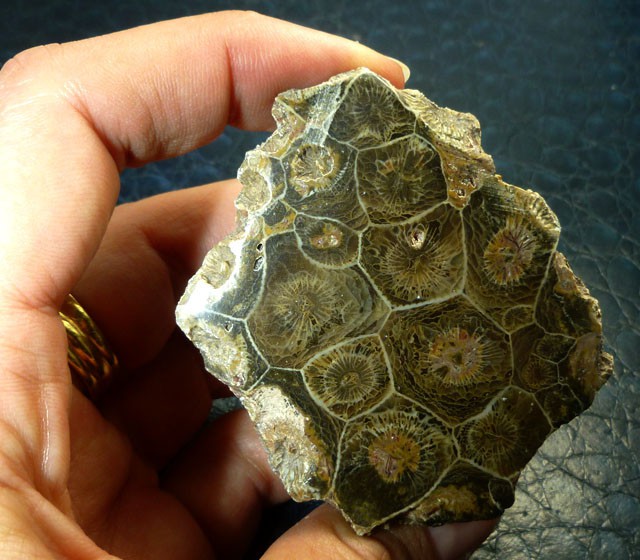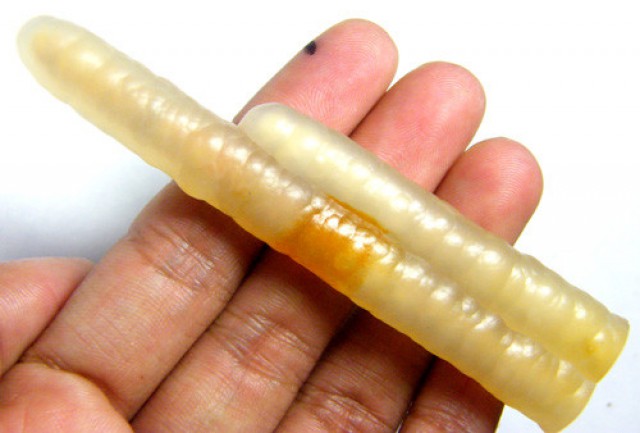
Objavljeno 18th Oct 2018
Izmijenjeno 4th Jun 2025
Fosili svijeta
Mnogi ljudi pitaju: „Što su fosili?“ U teoriji, gotovo sve što je nekoć bilo živo moglo bi postati fosil – čak i komadić želatinastog tkiva s mekog tijela morskog stvorenja. U praksi, većina fosila nastaje od tvrdih dijelova životinja i biljaka poput zuba, kostiju i školjki ili kore drveća i češera. Fosili se nalaze na svim kontinentima.
Danas prihvaćena definicija fosila uključuje organsko podrijetlo - objekt koji je nekoć bio živ. To uključuje sve organizme ili oblike života i njihove dijelove, od mikrobnih organizama, sitnih biljaka i insekata poput mrava i komaraca, do najvećih drveća, morskih pasa, dinosaura, kitova i mamuta.
Kada većina živih bića ugine, ona počinju trunuti i raspadati se. Njihove ostatke mogu razgraditi gljivice i bakterije, a sve vrste strvinara, od crva do hijena, mogu ih rastrgati, zakopati ili zdrobiti na komadiće.
Ono što ostane raspada se u fragmente djelovanjem sunca, kiše, vjetra, leda i drugih vremenskih elemenata. U vodi se događa slično raspadanje, potpomognuto valovima i vodenim strujama, te razgradnjom gljivica, crva, bakterija i drugih. Dakle, velika većina živih bića umire i nestaje bez traga. Prirodnim procesima se recikliraju natrag u tlo, na dno jezera ili rijeke ili morsko dno. Ne ostavljaju fosile.
Fosilizacija obično traje dugo i to je proces pun slučajnosti. Kao rezultat toga, obično se samo tvrđi dijelovi živih bića sačuvaju kao fosili. To su dijelovi koji se odupiru raspadanju, truljenju i jedenju lešinara, te koji opstaju dovoljno dugo da bi očuvanje započelo. Opet, popularni mit kaže da samo kosti tvore fosile, a možda i zubi. Ali postoji dugi popis drugih dijelova koji su glavni kandidati za fosilizaciju.

FOSILIZIRANI BESKRAJBESKLJAŠNJACI
Beskralježnjaci ili „beskičmenjaci“ kreću se od jednostavnih spužvi, poriferana, koje su bez živaca, mišića ili mozga, do složenih i visoko razvijenih glavonožaca poput hobotnice i lignje, sa sofisticiranim i inteligentnim ponašanjem. Mekušci su jedna od najbolje zastupljenih skupina beskralježnjaka u fosilnim zapisima, budući da njihove ljušture završavaju u uvjetima visoke vjerojatnosti očuvanja na morskom dnu.
Jedna od najvećih skupina beskralježnjaka su člankonošci ili člankonošci. Obuhvaća izumrle trilobite, bezbrojne rakove poput školjkaša i rakova te kopnene kukce i paučnjake.
SPUŽVE
Spužve, koljeno Porifera, neobične su životinje koje trajno žive na stijenama ili mulju morskog dna. Ispiru vodu kroz svoja porozna tijela i filtriraju sitne čestice hrane. Spužve imaju izuzetno jednostavnu anatomiju, nedostaju im specijalizirani organi, živci i mišići te posjeduju samo nekoliko osnovnih tipova stanica. Od kambrijskog doba većina spužvi ostavila je obilne fosile svojih mineraliziranih tijela.
Većina spužvi, u prošlosti i sadašnjosti, živjela je u morima i obično je imala šuplje, porozno tijelo pričvršćeno za morsko dno na jednom kraju. Voda se uvlači kroz stijenku tijela, gdje stanice za hranjenje koje oblažu unutrašnjost izvlače čestice hrane. Unutarnji kostur može se sastojati od rožnatog materijala, hada, mineraliziranih krhotina ili spikula ili i rožnatih i mineraliziranih elemenata, ugrađenih u stijenku tijela.

CRVI
Crvi su životinje u potpunosti mekog tijela, što znači da se rijetko nalaze kao fosili osim tamo gdje postoji iznimna razina očuvanosti. Crvi se nalaze u formacijama Burgess Shale u Sjevernoj Americi sačuvanim kao ugljični filmovi, te u formacijama Chengjiang u Kini, gdje su mineralizirani piritima. Njihovi tragovi fosila, poput brazda i jazbina, nalaze se diljem svijeta.

RAKOVI
Rakovi su najveća skupina morskih člankonožaca, koji nastanjuju širok raspon okoliša i imaju više od 40 000 živih vrsta, uključujući neke u slatkoj vodi i na kopnu. Uključuju rakove, jastoge, kozice, kozice i kozice poput krila u morima, kao i stjenice i mokrice na kopnu, vodene buhe u barama i školjke uz morske obale.
Rakovi se nalaze u fosilnim zapisima još od kambrijskog razdoblja. No, osim školjkaša, s njihovim jakim vapnenačkim pločama, općenito su rijetki zbog nedostatka uistinu tvrdih dijelova tijela. Tek pojavom desetonožaca ili "deseteronožaca" - rakova, jastoga, rakova, škampa i kozica s njihovim debelim egzoskeletima, rakovi su počeli fosilizirati s određenom redovitošću.
Skupina rakova s kojom smo najpoznatiji su desetonošci. Ovaj se izraz odnosi na "deset stopa" ili bolje rečeno, udove ovih vrsta rakova, koji su dva prednja kliješta i obično četiri para nogu za hodanje. Desetonošci uključuju više od 20 000 živih vrsta, što obuhvaća kozice i kozice - dva uobičajena naziva koja nemaju strogu znanstvenu osnovu - zajedno sa svim vrstama rakova, jastoga i rakova.
ČLANKONOŠCI – PAUKOVI – ŠKORPIONI
Člankonošci uključuju nekoliko vrsta helicerata - pauke, škorpione, xiphosurane (potkovnjake) i eurypteride (morske škorpione). Svi oni posjeduju helicere, snažne prednje dodatke različito modificirane kao kliješta, kandže ili očnjaci. Škorpioni i pauci poznati su kao paučnjaci, a karakteriziraju ih četiri para udova za hodanje.
Škorpioni su bili među prvim valom kopnenih životinja prije više od 380 milijuna godina. KUKCI – u fosilnim zapisima, golemu skupinu člankonožaca ili „zglobnih nogu“ dominiraju vodeni organizmi, poput još uvijek uspješnih rakova i davno nestalih trilobita. U usporedbi s tim, postoji malo ostataka glavne skupine člankonožaca koje susrećemo gotovo svaki dan – kukaca.
To je zato što je većina bila (i jest) mala, relativno krhka i često su je jeli grabežljivci. Ako ne, uginuli su na mjestima poput vlažnih šuma, gdje je raspadanje bilo brzo. Tipičan kukac ima tri glavna dijela tijela. To su glava, koja obično nosi antene ili ticala, oči i usni dio, prsni koš, koji nosi krila i noge, te trbuh koji sadrži organe za probavu, izlučivanje otpada i reproduktivne organe kukaca.
Odrasli kukac obično ima šest nogu i četiri krila, iako prave muhe (diptera) imaju samo jedan par krila.
FOSILI – SJEMENKE PAPRATI
Danas postoji više od 11 000 vrsta paprati, što ih čini najvećom glavnom skupinom biljaka nakon cvjetnica ili kritosjemenjača. Poput mnogih drugih vrsta jednostavnijih biljaka, razmnožavaju se sporama. Paprati su se prvi put pojavile u devonu, napredovale su tijekom karbona, postale su rjeđe tijekom kasnog perma i srednje krede, ali su doživjele ponovni procvat tijekom tercijara.
Sjemenske paprati ili pteridosperme nekoć su bile svrstane u prave paprati. Međutim, otkrića tijekom prošlog stoljeća pokazala su da se ove biljke razmnožavaju sjemenkama, koje nastaju kada se ženske i muške strukture spoje prilikom oplodnje, kao kod četinjača i cvjetnica. To je bio napredak u odnosu na primitivnije sporonošenje i druge metode koje koriste preslice, paprati i druge jednostavnije biljke. Listovi ili listovi sjemenskih paprati obično se nalaze u karbonskim naslagama "ugljenodobnog" doba, uglavnom diljem sjeverne hemisfere. Različiti dijelovi onoga što se danas smatra jednom biljkom često su dobivali različita imena.
Sjemenske paprati kombinirale su značajke pravih paprati s karakteristikama naprednijih stabala poznatih kao cikadi.

RIBE – MORSKI PSI
Morski psi bili su među najranijim skupinama riba, a njihov elegantan, aerodinamičan dizajn tijela malo se promijenio tijekom njihove duge povijesti. Morski psi i njihovi bliski rođaci, raže, zajedno su poznati kao elazmobranhi i, poput drugih riba, imaju unutarnji kostur. Međutim, ovaj kostur je neobičan jer je napravljen od žilave, jezive tvari poznate kao hrskavica, a ne od kosti, što im je, kao i himerama ili štakorima, dalo naziv hrskavičnjaka (Chondrichthyes). Hrskavica se nakon smrti raspada brže od kostiju, pa većina našeg znanja o pretpovijesnim morskim psima dolazi od njihovih dobro očuvanih obilnih zuba i bodljika peraja. Oni datiraju iz ranog silurskog razdoblja, prije više od 420 milijuna godina.
Fosil ribe
Većina današnjih vrsta riba i onih pronađenih u fosilnim zapisima imaju kostur od kostiju, a ne od hrskavice, te pripadaju skupini riba Osteichthyes. U devonskom razdoblju postojala je velika skupina ovih riba, poznatih kao režnjastoperajne ili sarkopterigi. Režnjastoperajne dvodihalice i celakanti, a također i davno izumrle ribe blisko povezane s precima tetrapoda - vodozemaca i drugih četveronožnih kralježnjaka.
PRIMITIVNE I ZRAČAPERAJE KOŠTNJAČKE RIBE
Većina riba danas pripada podskupini ostehtija (koštunjavih riba) s ražastim perajama ili aktinopterigima. Kod njih, bodljikave peraje, koje drže svaku peraju otvorenom poput rebara lepeze, izlaze izravno iz tijela, a ne iz mesnate ili režnjevite baze. Međutim, prije nego što se raža razvila, postojale su ranije skupine, uključujući ribe bez čeljusti ili agnathane, te davno izumrle plakoderme ili ravne ploče kože.
RIBE – KOŠTNJAČI
Većina današnjih riba spada u skupinu aktinopterijskih riba (raise finish) koje se nazivaju teleostima ili "potpuna kost", gdje je malo, ako ih uopće ima, dijelova kostura izgrađeno od hrskavice (hrskavice). Teleost uključuje veliku većinu živućih riba s više od 20 000 vrsta. Pojavile su se u razdoblju trijasa i brzo su evoluirale u srednjoj kredi kada su se uspostavile mnoge moderne porodice.
Među modernim košljatim ribama s zrakastim perajama, teleostima, najveća podskupina uključuje peerciforme ili ribe slične grgečima, poput Mioplosusa. Zajedno sa svojim bliskim srodnicima, teleosti čine Acanthopterygii, koji uključuju više od polovice svih vrsta živućih riba. Njihove karakteristične značajke uključuju krute koštane bodlje u ili blizu prednje leđne peraje, što cijeloj skupini daje zajednički naziv bodljikavo-zrakaste ribe.
TETRAPODI – VODOZEMCI
Tetrapodi su bili i jesu kralježnjaci s udovima koji danas uključuju vodozemce, gmazove, ptice i sisavce (iako su neki, poput zmija, izgubili udove tijekom svoje novije evolucije). Prvi terapodi koji dišu zrak vjerojatno su evoluirali od mesnatih riba s perajama koje nalikuju Eusthenopteronu i Panderchthysu u stvorenja poput Ventastega i Acanthostega prije nekih 380-360 milijuna godina.
U prošlosti su se neke vrste vodozemaca savršeno osjećale na suhom i vjerojatno im je voda bila potrebna samo za polaganje jaja prekrivenih želatinom prilikom mriještenja. Živi vodozemci su u modernoj klasifikaciji poznati kao lisamphibije. Tri glavne skupine su žabe i krastače, najviši beznogi daždevnjaci i tritoni, repati urodeli i beznogi, crvoliki ceciliji ili apodani.
KUPUJTE FOSILE
Pretražite Gemstone Encyclopedia
Najnoviji članci
Sunčev kamen s duginom rešetkom je vrsta feldspata s tri prekrasna optička efekta uzrokovana prisutnošću raznih inkluzija. Njegov vatreno šareni prikaz i uzorak rešetke čine ga rijetkim kolekcionarskim draguljem!
12th Jan 2026
Thulite is a rare Norwegian gemstone exhibiting a vibrant rosy hue from the zoisite mineral family that is commonly used in jewelry settings and pendants.
6th Jan 2026
Bizmutotantalit je rijedak mineralni dragulj iz obitelji tantalita. Relativno je mekan, što ga čini neprikladnim za umetanje nakita. Međutim, vrijedan je kolekcionarski predmet.
5th Jan 2026
Kategorije članaka
How To's is where you will find helpful articles from gem Rock Auctions on how to cut gemstones, select gemstones and buy gemstones.
9 Članci












